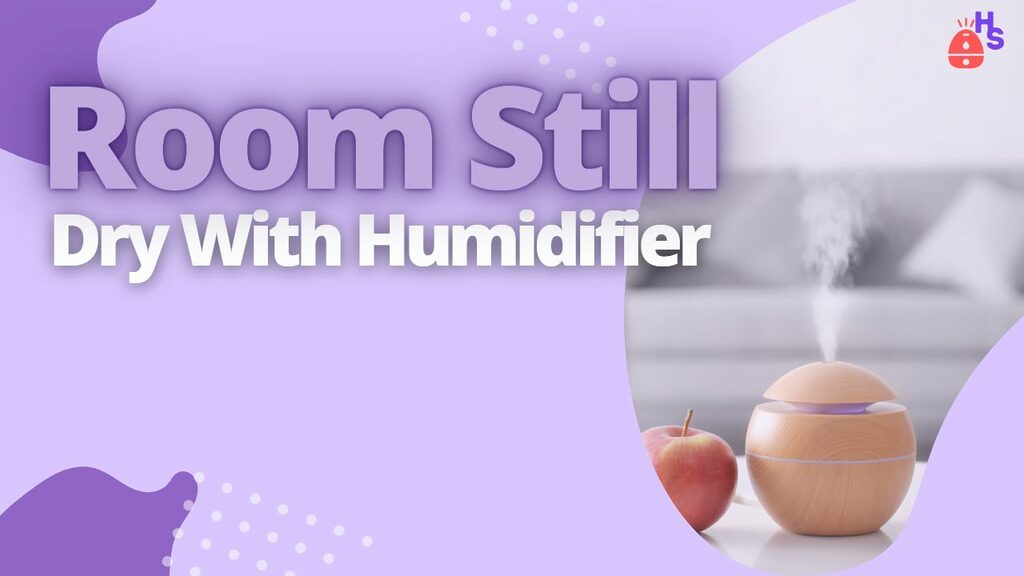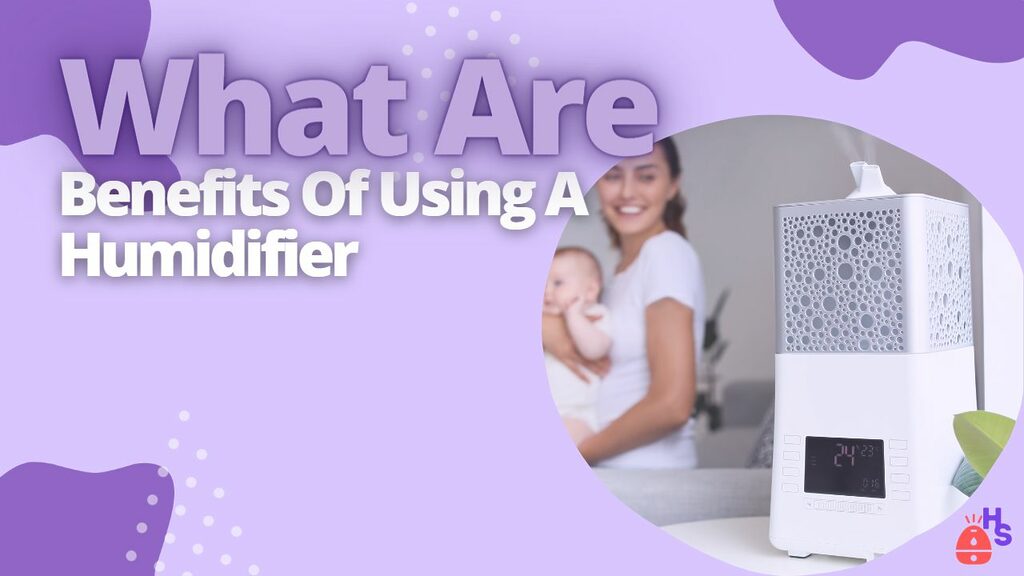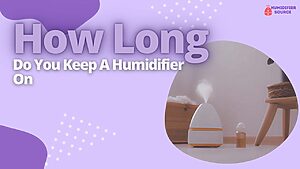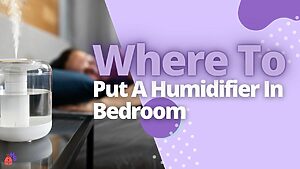You can try a few things if your room is still dry with a humidifier. Make sure that the humidifier is the right size for the room. Check the humidity level of the room and adjust the humidifier accordingly. Clean the humidifier regularly to prevent the build-up of bacteria and mold.
Don’t let a dry room ruin your comfort – follow these tips to get the most out of your humidifier.
Key Takeaway’s
- A humidifier is a device that adds moisture to the air.
- If your room is still dry with a humidifier, there are several possible causes.
- The most common cause is that the humidifier needs to be fixed.
- Other causes include a dry climate, leaky windows, and insufficient insulation.
- To fix a dry room, you need to find the source of the problem and take corrective action.

Here’s The Answer To Room Still Dry With Humidifier
While a humidifier can make your space more comfortable, there are a few things to remember to make sure it works properly.
Make sure that the humidifier is the right size for the room. A too-small humidifier will not be able to effectively moisten the air, while a too-large humidifier can make the air uncomfortably damp.
Be sure to clean your humidifier regularly. A dirty humidifier can make the air in your room more polluted than if you didn’t have one.
Take care to use distilled water in your humidifier rather than tap water. This will help to prevent mineral build-up inside the machine and keep it working properly.
If you adhere to these suggestions, you can be sure that your humidifier will contribute to bettering the indoor environment and increasing comfort levels for all occupants.
Check The Humidifier’s Water Level

- Check the tank for water. People frequently forget to refill humidifiers, which can result in a dry room (especially during the chilly winter months). If there is no water in your humidifier, fill it with distilled or spring water and wait for it to mist up before turning it back on.
- If there is still no mist after refilling, remove the lid from your humidifier and check for any clogs in the system using a flashlight or bright light source. You can also use an essential oil cleaner like lemon extract or vinegar if you have one handy—make sure you don’t spray any cleaning chemicals into your face.
Clean The Humidifier According To The Manufacturer’s Instructions
- How to clean the humidifier
- How often to clean the humidifier
- What you can do if you don’t have a water softener or a water softener but it doesn’t work well enough.
Adjust The Humidistat To A Higher Setting
If you’ve tried everything, but your room still feels dry, it’s time to adjust the humidistat. The humidistat is a control on the front of your humidifier that lets you choose how much humidity to put into your room. It can be set at intervals from 40% up to 100%.
When humidifier malfunctions, people frequently start out by leaving it on a low setting in the mistaken belief that it will be more effective and economical.
The truth is, you should set the humidistat according to what feels comfortable for yourself and not worry too much about whether or not this will save electricity or whatever other reason manufacturers have given people over time.
When I lived in New York City during wintertime, my system was set at 75%, even though my apartment was constantly cold.
Move The Humidifier Closer To The Area That Needs Humidifying
Moving the humidifier closer to the area it needs to humidify can significantly affect how well it works.
Put it in the room where you and your family spend the majority of your time because the air quality there is poor.
The best place for a humidifier is on a flat surface (not on furniture), away from any heat sources like lamps or stoves.
This prevents accidental burns and makes sure that there’s enough airflow around the device.
Make Sure The Humidifier Is The Right Size For The Room
There are many things to consider before you buy a humidifier. But one of the most important? Making sure it’s the right size for your room.
A smaller humidifier will be enough to keep your home comfortable if you have a small room.
A unit that is too small will have trouble keeping up with demand and may need to release more moisture into the air.
If you have a large space—like a living room or bedroom—you might need to get a larger unit (or even two) to adequately humidify the space, especially if you live in a natural dryer area.
What Are The Benefits Of Using A Humidifier?

Humidifiers can do a lot to help you, as well as your home. Humidity is good for your skin and keeps it hydrated throughout the day.
It also helps keep your sinuses clear, making you feel better when you have allergies or colds.
A dry throat can be caused by cigarette smoke or other irritants in the air, so if those are in your home, using a humidifier is a great way to get rid of them.
Humidifiers also prevent dry eyes and cracked lips, which are common problems that can be prevented with proper humidification.
Dry lips make drinking and eating harder than they should be, while dry eyes cause headaches (which we know aren’t fun).
How Can You Tell If Your Room Is Too Dry?
If you have dry skin and hair, you might be experiencing the effects of a dry room. Drying of the mucous membranes (the moist membranes in your body), including dry eyes and nose, can also indicate that it’s time to add humidity back into your home.
If any of the following signs apply to you:
- Dry skin or chapped lips
- Dry hair with split ends
- Cracked heels or hands that peel easily
What Are The Consequences Of Having A Dry Room?
A dry room is an uncomfortable place to be. You don’t want to feel like you are breathing through a straw and don’t want your skin to itch or your eyes to water.
Unfortunately, while it may not always seem like it, having a humidifier in the house can help with all of these issues.
Dry air can cause dry skin and eyes because there is not enough moisture in the air for them to stay moisturized.
Dry air can also cause dry sinuses, throat and coughs because they become uncomfortable when they aren’t getting enough moisture from their environment.
Final Thoughts
You can do a few things if your room is still dry with a humidifier. Try moving the humidifier around to different areas of the room.
You can also try using a bigger humidifier or one with more features.
If you’re still having trouble, read other articles on our website about similar topics or ask questions on our social media channels.
Frequently Asked Questions
I just bought a humidifier, and it’s not working. Help!
If you just bought a humidifier, likely, your room is still dry. You should check to see if the room’s humidifier is the right size and clean it regularly. If none works, ask a question on our social media channels or visit one of our FAQs pages.
Why isn’t my humidifier making my room more comfortable?
If your humidifier is dirty, it can make the air in your room more polluted than if you didn’t have one. Clean your humidifier regularly to keep it working properly.
I turned on my humidifier, and now everything is wet. What happened?
The humidifier is designed to produce a mist. If it’s constantly wet, the humidifier might be over-humidifying your room, and there could be problems with the machine. Check if you’re using distilled water in your humidifier or if something else is blocking the water from reaching the unit.
Can I put my humidifier in the closet/under the bed/in the corner of the room?
Humidifier location can vary depending on the room. However, humidifier placement should generally be in a dry area of the room to absorb humidity best.
Author
- The Right Way To Fill A Humidifier: Hot Or Cold Water?
- Humidifier And AC: Is It A Match Made In Heaven?
- Can I Use A Humidifier With The Window Open (Solve Your Dilemma)
- Perfect Air Quality: How Long To Run Your Humidifier
- Should You Have A Humidifier In Nursery (The Surprising Benefits)
- Humidifiers In Bedrooms: A Guide To Good Placement









